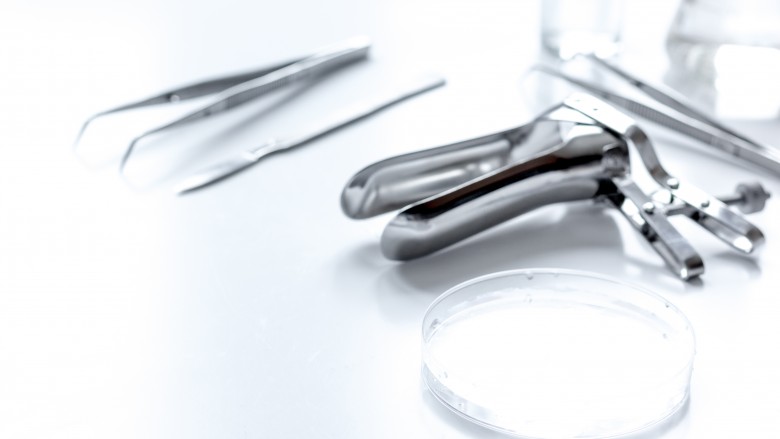What Really Happens When You Decide To Get The Birth Control Implant?
The birth control implant is a form of long acting reversible contraception (LARC). According to the Association of Reproductive Health Professionals, the implant has a failure rate of just 0.05 percent, making it just as effective as getting your tubes tied.
But, unlike tubal ligation, it is completely reversible if you decide to have children. Like all forms of birth control, some people are better suited to the use of the implant than others. Here's what really happens when you get the birth control implant, so you can decide if it's the right choice for you.
How the implant works
The birth control implant is a hormonal contraceptive that is inserted subdermally into a woman's upper arm to slowly release a synthetic form of the sex hormone progesterone (progestin) over time. The implant does not contain estrogen. The release of the hormone progestin helps prevent ovulation, meaning a woman does not release an egg to be fertilized.
The most common forms of the implant have been Norplant, Implanon, and, most recently, Nexplanon. While Norplant was the implant of choice for years, it was actually composed of six separate rods that caused some complications on insertion and removal. Norplant also used a different type of progestin than newer generation implants use. Additionally, there were questions about the efficacy of Norplant and it was discontinued.
Implanon was a newer generation implant that used only a single, matchstick sized implant to release progestin slowly over time. It was upgraded to Nexplanon in 2011, which utilized a more efficient method of insertion. By and large, Nexplanon has replaced Implanon in recent years because of its advantages during insertion and removal. And while the implant is long acting, it isn't permanent. Eventually, the implant is no longer considered effective and must be removed. The official word on implant replacement is that it should happen after three years, but some research suggests the implant is effective for up to four years.
It is clinically effective and basically pays for itself
Currently the birth control implant is covered under the Affordable Care Act for those who have insurance. If, however, you do not have an insurance plan that covers the implant, it may cost up to $800 upfront. Because the implant lasts for up to three years, the initial cost pays for itself over time.
Research has shown that the implant is more cost effective than birth control pills at any stage. One study showed that after 12 months, the implant is half the cost of oral contraceptives. While the long-lasting effectiveness of the implant makes it more affordable, it also makes it more effective at preventing pregnancy as well. Like other forms of long acting reversible contraception, the fact that women do not have to remember to take a daily pill means that the efficacy does not rely on compliance. This is important because lack of compliance and improper use of contraceptives are the major causes of failure.
Preparing for insertion
Prior to actually getting your implant, your doctor, nurse, or midwife will complete a medical history and ask you some questions about your plans to have children. Once you and your medical professional decide that the implant may be a good fit for you, the insertion process will begin with antiseptic at the area of insertion — your upper arm — and a numbing local anesthetic to prevent pain.
With the newer generation Nexplanon, the insertion happens quickly and easily with a preloaded applicator that can be operated using only one hand. A small incision or puncture is created by the applicator and the implant is pushed through the applicator and into the subcutaneous space created by the applicator. Although medical staff — and you — will be able to feel your implant under your skin, it is not visible. Because the implant is thin and flexible, it generally does not cause visible protrusions in the skin. This means the implant is virtually invisible, making it so discreet that no one will even know you're using it.
Bruising may be somewhat severe
While the consensus from all of the women I spoke to, was that insertion of the implant wasn't too painful — except for a bit of soreness after the numbing agent wore off — all of them noted that the bruising was rather extreme. While a snug bandage is placed on the arm after insertion to help minimize it, bruising is a known potential side effect.
Sharon Rosenblatt from New Haven, Connecticut no longer has the implant, but recounted for me what it was like right after she got it. "Afterwards, when the novocaine wore off, I was really sore, but it looked so much worse than I felt," she said. "My whole upper arm was bruised." She also shared that it was a little unnerving to watch the insertion, but that the recovery was much quicker than she expected. "I was back to swimming within a week and running even faster."
It is considered very safe
The implant — particularly newer generation implants like Nexplanon — are considered quite safe. Research has shown that there is no increased cardiovascular risk, meaning that the implant does not cause problems with cholesterol, blood pressure, or increase the risk for heart disease.
The implant also has less of a metabolic impact than combined oral contraceptives, making it safer on liver, kidney, and renal function as well as carbohydrates and insulin release. Unlike other forms of long-term birth control like the Depo injection that can have serious impacts on bone density over time, the implant was shown to be not significantly different from the nonhormonal IUD, with respect to bone density decrease.
It can be used to treat other problems
The implant has a well established history of being used to treat pain associated with both endometriosis and pelvic congestion syndrome. Laura E. from Las Vegas, Nevada, discovered that the implant can be used for even more. "I was having severe migraines almost daily and pain from fibroids," she said. "Nexplanon was recommended as the best way to treat both issues."
Laura added that not having to worry about remembering birth control was an added benefit since she and her husband decided not to have any more children. She also remarked that not having a period anymore is "amazing." Even though she is just halfway through the lifespan of her first implant, she plans to get it replaced with a new one once it expires and continue with it long-term.
There can be side effects
Like all hormonal methods of birth control, the implant may have some side effects. The most common of all these side effects is irregular menstrual bleeding. For some women this means their periods will stop, for others it may mean spotting in the middle of their menstrual cycle, and less frequently, it may mean more bleeding.
According to a meta analysis of 11 different clinical trials, 22.2 percent of women stopped getting their periods entirely, while 33.6 percent experienced spotting or infrequent bleeding, 6.7 percent got their periods more often, and 17.7 percent had prolonged bleeding that happened outside of a normal menstrual cycle. That said, the same study showed that only 11.3 percent of all patients had the implant removed because of concerns about bleeding, and these were mainly from the group of women who experienced prolonged or frequent bleeding.
It can be removed early if you want to get pregnant
Just because the implant lasts for three years doesn't mean you have to keep it in for that long. If you decide you want to have children or you are experiencing side effects, your doctor can remove the implant at any time. While some long acting reversible contraceptives can make it harder to get pregnant for up to a year after after removal, like the Depo shot, ovulation after the implant has been observed as early as seven to 14 days after removal.
This means that you can start trying to get pregnant pretty much immediately, if you decide you want children. This also, however, means that if you have your implant removed, you either need to immediately have another one inserted or start using another form of contraception if you don't want to get pregnant.
Preparing for removal
For the vast majority of women who have the implant, removal is easy. The newer generation Nexplanon even contains a small amount of barium sulfate so that it can be seen by X-ray if dislodged or inserted incorrectly. Part of the goal of having both the medical professional who inserts your implant and you feel for it right after insertion is so that you can be sure it's in place and so that you personally know what it should feel like.
Still, it is possible that the implant can become hard to find once you're ready for it to be removed. Both ultrasound and magnetic resonance imaging (MRI) can be used to help locate a missing implant so that removal can proceed easily. There have, however, been reported cases of nerve damage in cases where a doctor must perform a dissection to find an implant that is not able to be felt under the skin or visualized using usual techniques. These instances are rare, but it is important to know that they exist.
Different experiences in different geographic regions
After getting the implant, Johanna Seale moved from Cambridge, Massachusetts to Hoboken, New Jersey and found that the implant was not as common there. When she decided to get it removed to try to have another baby, the process was easier said than done. "I had to call five OB/GYN offices in my town before I found a doctor who was trained to remove the implant, and I had to wait for several weeks to get an appointment with that doctor," she told me. "The removal was much worse than the insertion – scar tissue had built up around the implant and it took several minutes of digging in my arm and trying different instruments to get it out."
Before getting your implant inserted (or removed), it may be helpful to find out how much experience your doctor, nurse, or midwife has with the implant to help minimize problems with insertion and removal.
Some people shouldn't use it
There are some contraindications when it comes to the implant — meaning, there are some people who shouldn't use it at all. According to the Nexplanon drug insert, you shouldn't use the implant if you are pregnant or think you may be pregnant, have a history of blood clots, have liver disease or a liver tumor, unexplained vaginal bleeding, breast cancer, or any allergies to anything in the implant, such as the barium sulfate used to see the implant on X-ray that can cause reactions at the insertion site.
Is the implant right for you?
Like all forms of birth control, the implant may not be right for everyone. Each woman's body and hormones are unique, and it isn't always easy to predict whether she will experience side effects or complications from using the implant or other forms of birth control. While the implant is highly effective, long lasting, and minimally invasive, it is important to talk to your doctor about whether it is the right choice for you.
You may find that other forms of long acting reversible contraception, like intrauterine devices (IUDs), may be a better fit for you, or you may decide that you have no problem remembering to take a pill every day and want to stick with tried and true oral contraceptives, or that the quarterly Depo injection is a good choice. Whatever decision you make about the implant or any birth control option, it's best to be well-prepared so you know what to expect!












